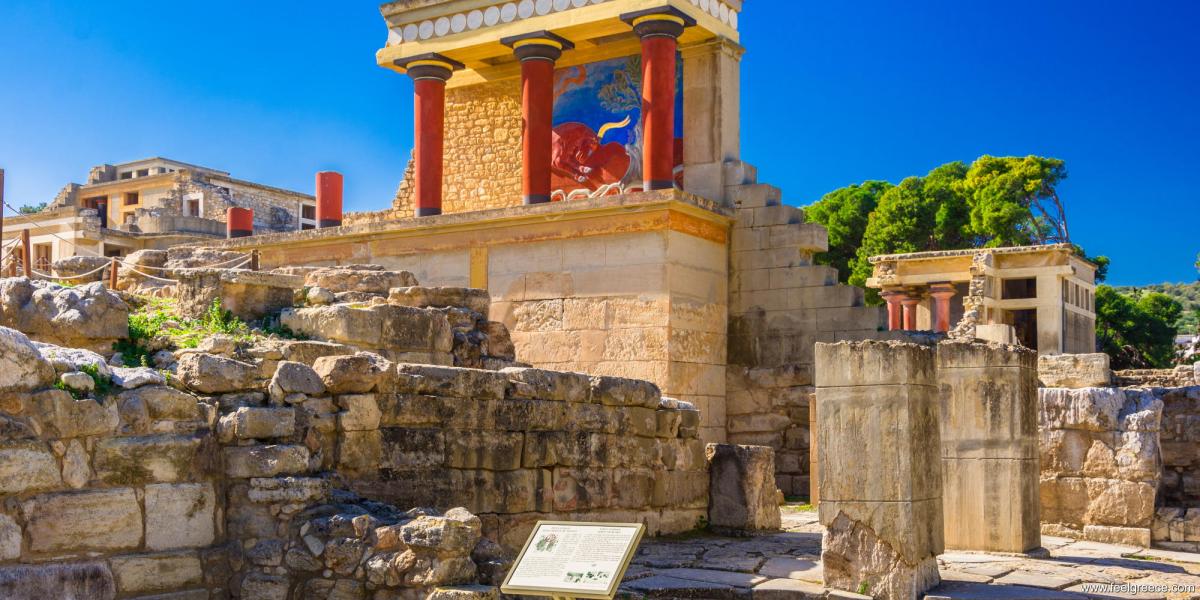Crete
the island of the Minotaur

Crete
Crete is the largest island of Greece and the southernmost point of Europe known as the island of the Minotaur from the Greek mythology. Surrounded by two seas - Cretan to the north and Libyan to the south, it is a crossroads of three continents. It has elongated shape, 300 km in the widest part and 100 km in length. Most of the island is mountainous, with four mountain ranges and six peaks over 2000 meters, forming valleys and gorges, the most famous of which is the Samaria Gorge. Around Crete there are a number of small uninhabited islands, the most famous of which are Gavdos, Dia, Koufonissi, Gaydouronissi (Chryssi), Dyonissades, Spinalonga and Paximadi. In the southwest is Elafonissi - a little sandy islet to which you can walk as the sea depth does not exceed 1 meter.
Crete has been inhabited since ancient times and has many historic landmarks. It is the place where one of the most ancient European civilizations arouse - Minoan. The Minoan civilization existed for seven centuries and was destroyed by the eruption of Santorini volcano, north of Crete, perhaps creating the legend of Atlantis. In the following centuries Crete had been ruled by the Roman Empire, Byzantium, Venice and Turkey until 1907, when it become part of Greece.
Today the population of Crete is over 600 000 inhabitants. The coastline is represented by rocky cliffs and endless sandy beach. The water is clean and transparent but very salty. The hottest temperatures are in July and August, exceeding 40 degrees and even in winter the temperature does not fall below 5 degrees. You can swim in the sea almost all year round. The island is administratively divided into four prefectures (regions): Chania, Rhetymnon, Lasithi and Heraklion.The largest city and capital is Heraklion. Other important towns of the island are Chania, Rethymnon, Agios Nikolaos and Ierapetra. The two airports on the island are located in Heraklion and Chania. Although it is part of Greece, Crete differs from other places in the country. The island has its own dialect and own music, the cuisine is with Mediterranean predominance known worldwide as Cretan cuisine (or Cretan diet, although in this case a diet is simply the way of nutrition of the Cretans and not a particular nutritional rule). Traditional musical instruments are lyre and askomandura (instrument similar to bagpipe) so the music you hear on Crete can not be compared to any other.
Due to its versatility, the island has a lot to offer tourists of any age. The towns and larger resorts can be found on the north coast of the island, providing various types of hotels, including all inclusive and adults only, small complexes with studios and apartments, guest houses, numerous places to eat and shop, beach facilities and water sports. These north resorts are lively and transport is so well organized that you can forget about the car on your holiday and take advantage of the local net of buses, taxes and organized trips to the entire island, or other Greek islands. The south part, though, is less developed and scarcely populated. The villages are mainly small and quiet, most beaches are wild and unspoiled and you will definitely need a car (your own or rented) if you want to explore it.
For sure beach activity is not the only thing to do on Crete. There are many archeological sites to visit, the most popular being the palaces of Knossos, Festos and Gortis, the Venetian fortress in Rethymnon, the castle of Frangokastello and other ruins of castles and old fortresses scattered around the island. For nature lovers there is the mountainous Samaria Gorge, numerous hiking trails and even more caves. The island has about 3000 caves, large and small, and according to legend Zeus himself was born in one of them. Crete is also the birthplace of famous artists and writers such as El Greco, Damaskinos, Kazantzakis and many others.
highlights: the island of the Minotaur, island in Greece